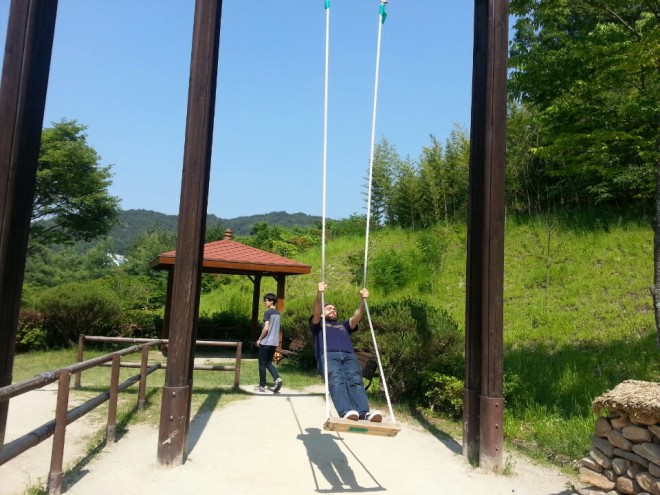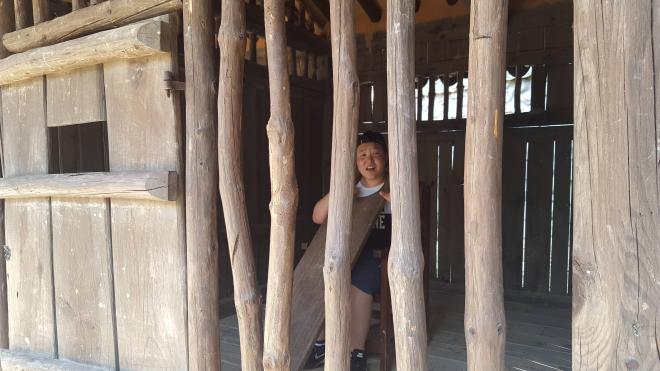I just realized it’s been about two months since my last post, but that’s ok. You haven’t really missed out on much. Before I start the post, here is an update on life the last two months (you can skip to the *** part just above to the mountain picture if you want to get right into the content) I spent most of January too broke to do anything because of my Cambodia trip, and February in Korea is a mix of extremely boring, cold, and depressing. In that time my girlfriend and I split (mutually, still good friends but I was still sad over it), I got terribly sick, and I learned that I was allergic to amoxicillin by breaking out in hives all over my body. Doctors didn’t really help much with it. I also learned that February’s Seoullal 설날 is the best time to travel out of Korea because everything is closed. I spent that time in bed with hives, no money, and a sore heart. Desk warming after the holiday was also a pain. I gotta say I’ve never felt so desperate for work to start back up again!
March brought some great fortune though! I finally got my bike and got to take it for a long long ride in the countryside (here is a pic below. I will make an individual post about biking in Korea. the long story short on that is thus: Korea is an amazing place for cyclists!!)
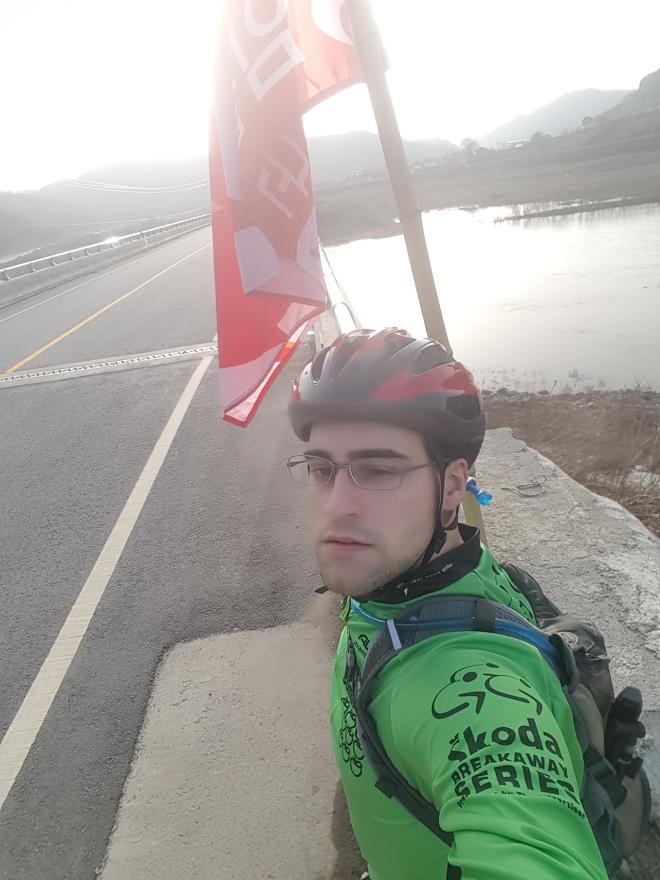
The hills and mountains here make it a tough workout though! no joke! I think there was only one major mountain/hill I had to bike up/ down for my 20km ride (short but sweet hour bike ride. It was a little late), but it added 500km ascent to my Strava stats!
We also got some new teachers who are very social and outgoing which is great! The other teachers here all work in the same building so they socialize a little less with us traveling teachers (they are good folk though! Just different schedules and things going on for em). The weather has gotten better, I started talking to a very lovely girl who lives in China (probably my next adventure after Korea!), and all my new schools are so great and supportive! I have to teach at 6 different schools, but they are all amazing. Finally making friends with teaching staff and being taught great techniques for my lessons. I cut down on my drinking and my initial anxiety over Korea is fading. I have cute students in my elementary schools who either beg me to play a mobile Call of Duty-like game called “Special Soldier” (the boys obviously haha) and the girls try to teach me Korean. I feel like my turbulence is ending, though lesson planning kills me a bit (SO many lessons!!). But my teaching skills have improved so much compared to last year!
****All that being said, I’ve been in need of a little spiritual grounding. Because my Korean is so little it’s hard to communicate, I haven’t really been able to go to a temple and my meditation practice seemed to have hit a wall. Luckily a good friend of mine here, 태구 (Taegu), and his family are very close friends with a head monk at a hidden yet famous temple not too far from me in the mountains of Songsu (성수산).

I’ve been practicing Buddhism since I was very young. I started meditation in 1st grade to counter my ADD problems because I hated taking the medicine for it (thanks 90’s internet and Ask Jeeves search! I don’t even know if Ask Jeeves is still a thing lol!). And from there I piecemeal’d a practice together, met many great teachers from all over. Even still; I spent a lot of time in college still trying to figure out what it is all about. Even my time spent in Cambodia, or the hidden temples throughout MA left me with more questions than answers. I got a lot of different pieces of advice and some lessons from those I was fortunate enough to work with, but never a very precise answer to a lot of the mysteries that westerners encounter when really trying to figure out traditional Buddhism and life of the monks.
Going to this temple, named Sangiam 상이암 (literally “Left Ear”), as a friend and guest gave me a chance to explore a temple complex in a way that I’ve never been able to experience before. I got to walk around the meditation hall, was taught proper Korean prostration, saw the guest house (which I can stay at any time! They are so kind here!), the head monk’s private meditation chamber, and an amazing meditation lesson!
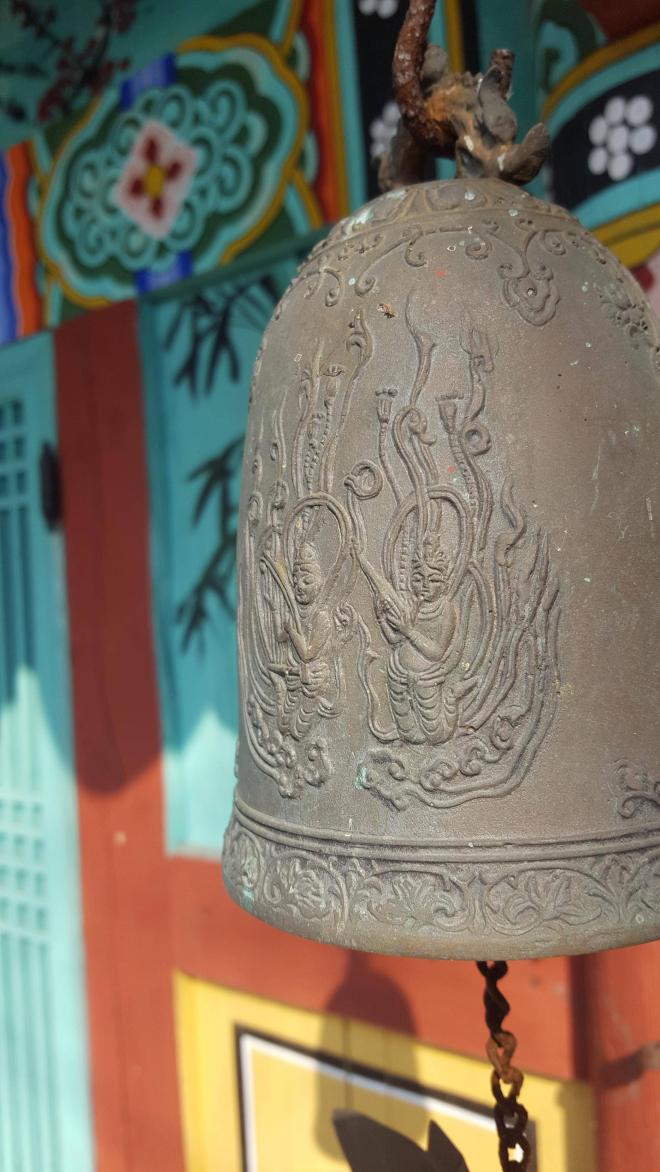
A bit of history:
This temple, although small and hidden, was the temple where the wise King Sejong’s grandfather, King Taejo Yi of Jeosan, went to worship. He renamed the temple when he heard of his grandson’s birth. King Sejong is the scholar-king who created Hangul, thus scattered throughout the temple rocks are carvings in the ancient Korean-Chinse language (since the current writing system didn’t exist yet). It is very beautiful:
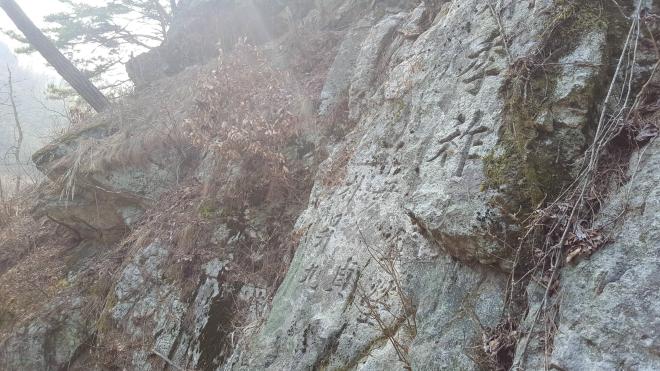
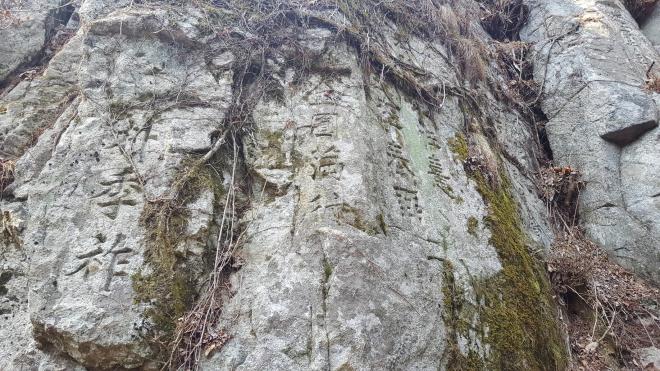
This stone below is potentially one of the founding monks (스님). The first character , 태구 tells me, means “3” Maybe it was one of three monks?
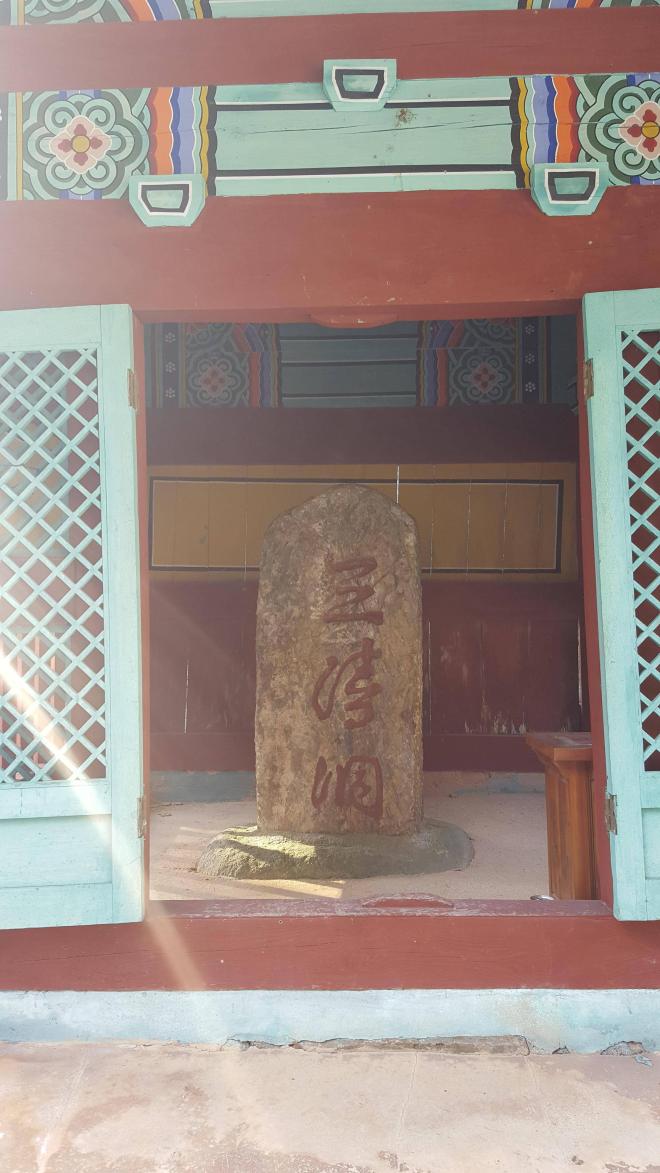
There is also a small fresh mountain spring here. You see them all over Korea near the mountains. Fresh water from the streams that continuously pour down the mountains are collected in small pools for drinking if you are passing by. At first I didn’t know what they were or what you do with them. The first time I used one was when I was biking up the small mountain near my town. I felt like I was dying by the time I reached it because I am out of shape. I stopped here and saw that there was a small spring of water and some ladles. Without knowing what they were for, I drank anyway! Turns out I was doing it right! This is the one near my town, 임실:
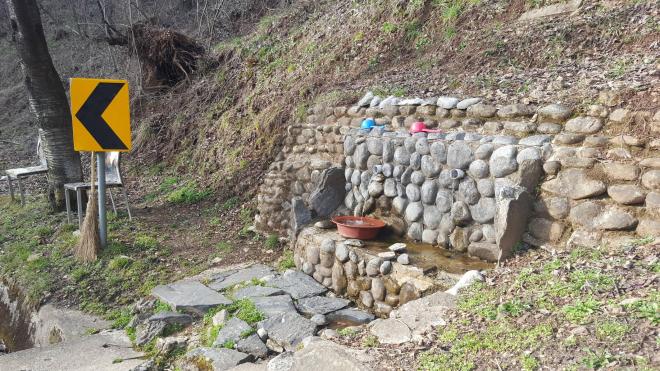
It’s a little plain compared to the One at the temple, which was so calm in its appearance.

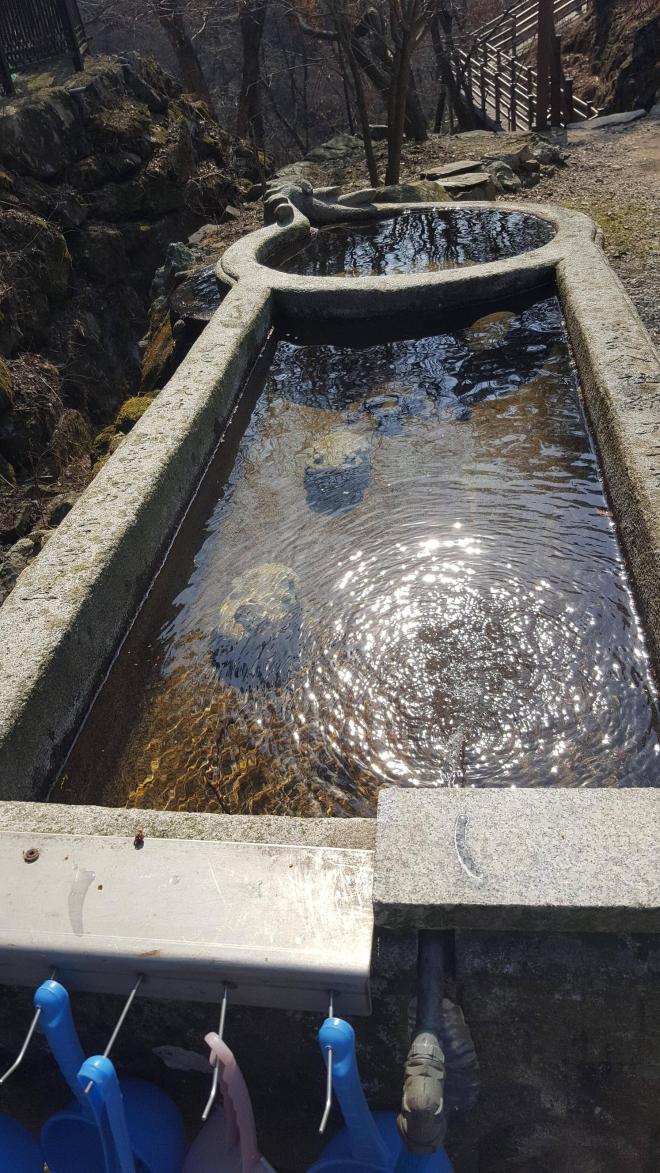
The area around the mountain is very rural as is, so it isn’t spoiled by heavy tourism, thus the nature trails are very scenic and beautiful. The sounds of creeks and small animals fill the air. Guests build small stone towers along the way in hopes that their wishes will come true. There is also an abundance of wild life around the mountains as well.
Not long after arriving to the temple itself, I was greeted by 2 cute black goats which were shy at first, but then came back with a small family of maybe 6. I think it was good luck! My Chinese Zodiac sign is the goat (probably why I look better with a beard). I told my previously mentioned Chinese friend about it and she is certain it is a sign of good luck! I do too. I feel like I am finally feeling more contentment with life here after a very rocky winter. Everything is looking up!
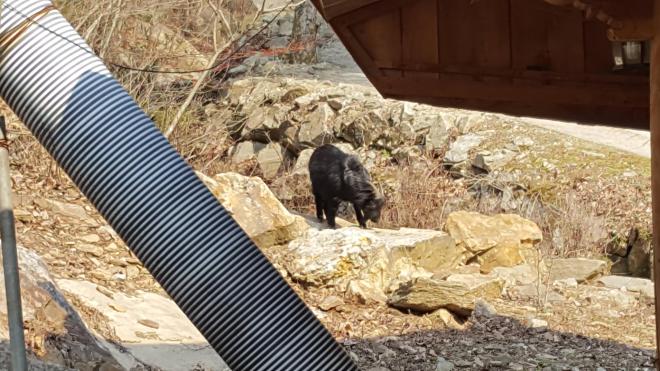
I didn’t get photo’s from when they were all together and coming rather close. You could hear them “mie mie-ing” to each other. Last time I went to a temple, it was in Daegu and I was approached by a wild boar. I swear I am the snow white of mountain animals.
The temple complex itself is small but very peaceful and beautiful. It has a larger guesthouse with a library, a smaller one which is only a single room, a dormitory for the monks, a small meditation chamber for the monks, a smaller one for the head monk, and a room for basic cooking, meeting guests, teaching,and living.
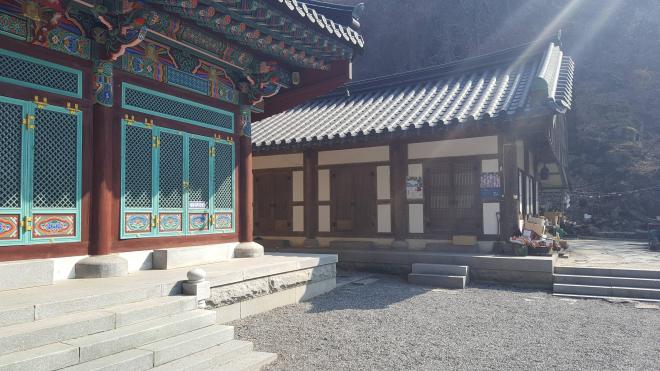

The main meditation/prayer room for laypeople is rather beautiful. Because it was empty and I was there with 태구 I got to, for the first time, shamelessly walk around and take pictures. In Cambodia, the US, and other temples I’ve been in, I’ve never been able to get a good look or photos of a room like this. Always too nervous to disturb people’s prayer or to do something that might be disrespectful… which was always a shame because these rooms are absolutely beautiful!!
I spent the evening meditating in this hall under the training of a monk in red robes (with too many names, so me and another monk there just call him “Red Monk”). His teaching was absolutely amazing. Friendly yet somber, a good teacher. I was able to make a movement with my meditative slump I had found myself in. During the session I had nearly forgotten where I was, yet while still knowing where I was. I felt this human worldly connection with all living things while contemplating the Koan “This pear, it is not a pear. How is that so?” I don’t know if I found that answer but I found myself closer to the people around me. Less of a clutch on the ego; less feeling of separation from people.
This meditative style is different from Theravada which is mainly focused on an empty mind and breathing in and out. The breath and empty mind is the Koan itself. With Korean style Buddhism, it is more related to Zen. You meditate to gain both focus and endurance.
The world is separated into two sections: the outer gates: sight, smell, hearing, taste, feeling. The inner gate and ego is “thought.” To know one you must know the other.
When you meditate you think
“I see this thing (and it makes me feel___”) Who am I that feels like ___ to this sight?”
“I hear this sound (and it makes me feel____”) Who am I that feels____ to this sound?”
same with the rest of the outer gates.
You contemplate each answer the same way. The idea is to question each thing, and each answer until you find “0” (zero) nothing. and understand it in the context of Buddhism. Being a monk means learning the culture and traditions of Buddhism along with finding a way to always ask each of these questions with every action you take so that you are aware of everything you do. When this can be achieved, nothing you do or feel is automatic, but a conscious and controlled mindful action. I spoke with a monk named 데산 스님, who had been studying for 13 years. He is so open and friendly and everything he said was full of joy, beauty, and meaning. The kind of person you can’t feel uncomfortable with because he speaks to you with the style and sincerity of an old friend. Even he considered himself a beginner, as did the Red Monk.
I had a lesson on our worldly connective state and how existence only exists because of condition. I am only here writing this due to specific conditions taking place over thousands of years. Remove even a single Condition and I may not exist. Remove a single condition post birth and I might not be a teacher in Korea. This too tied into the Koan about the pear. This might seem like something you hear from The Butterfly Effect, but when you meditate on it, you see so much more than an interesting movie concept. Before we departed I learned the word “Inchin” (I don’t know the spelling) but the meaning is “the seed is the condition for the tree” It’s a very important word in Buddhism…. but in Korean it is a slang word for bitch too. There is always humor with monks!
Dharma lesson aside, here are some photos of the monk’s meditation chamber, guest house, and paintings inside of the large prayer room. I’ve rarely felt so peaceful and at home. Next chance I have, I will stay a night there and continue my study 🙂
There is much more too, but that would make for such a long post!
After we finished I went out for Chinese with 태구 and his mom. She is excited to show me some pottery and calligraphy next time we meet. She is very sweet! I need to learn more Korean so I can properly thank her for her kindness. 🙂
